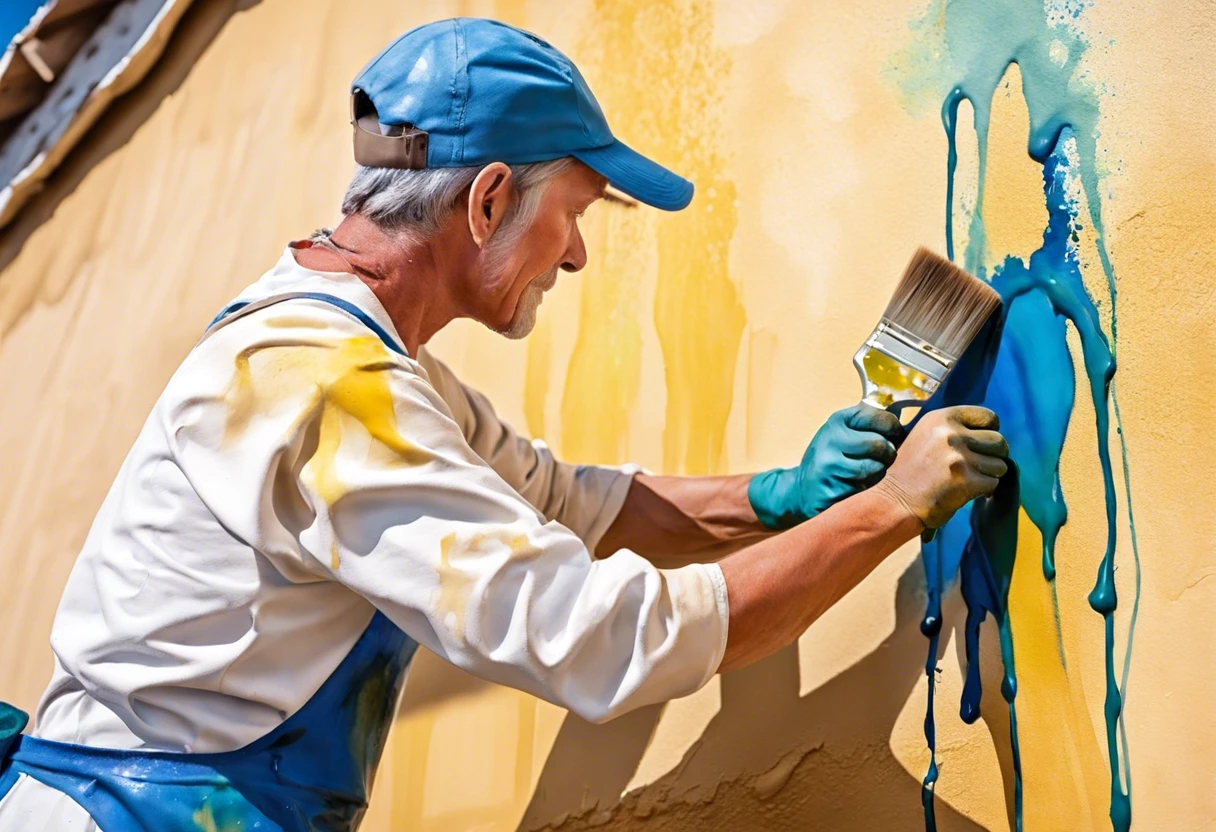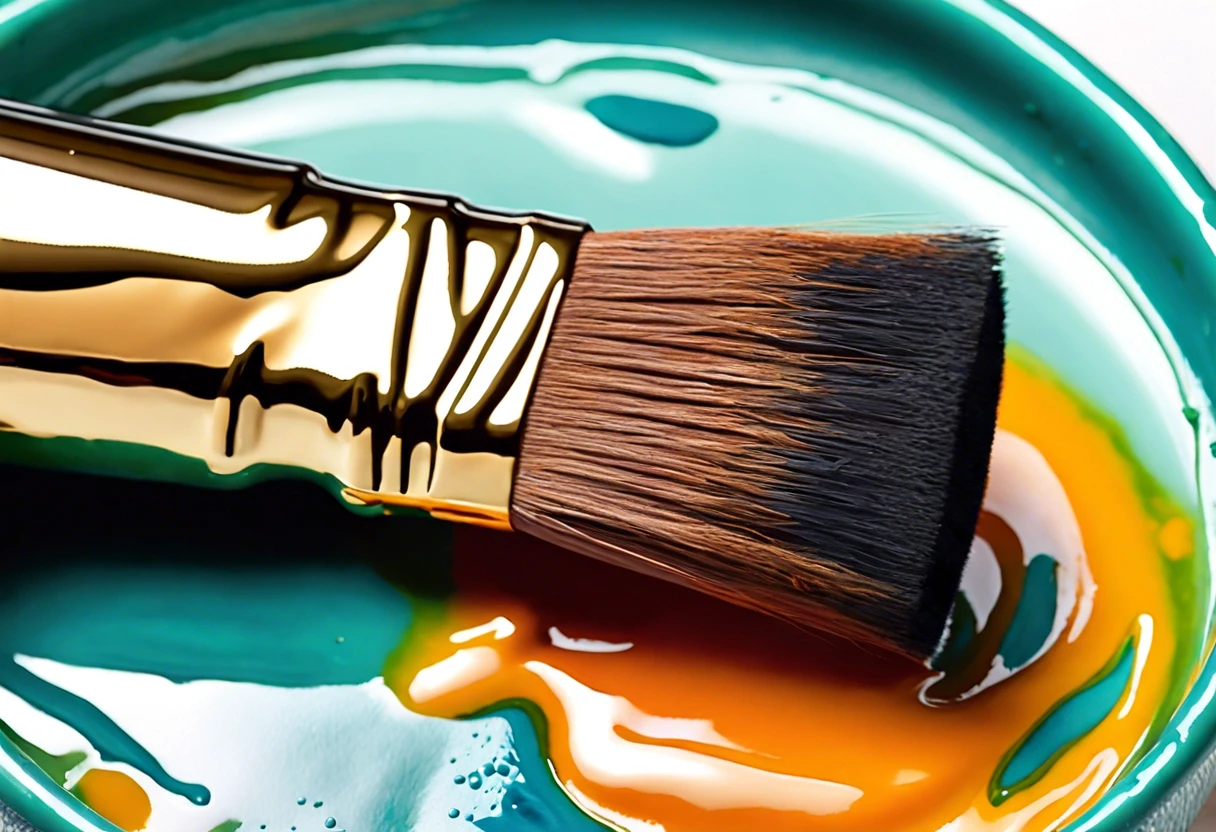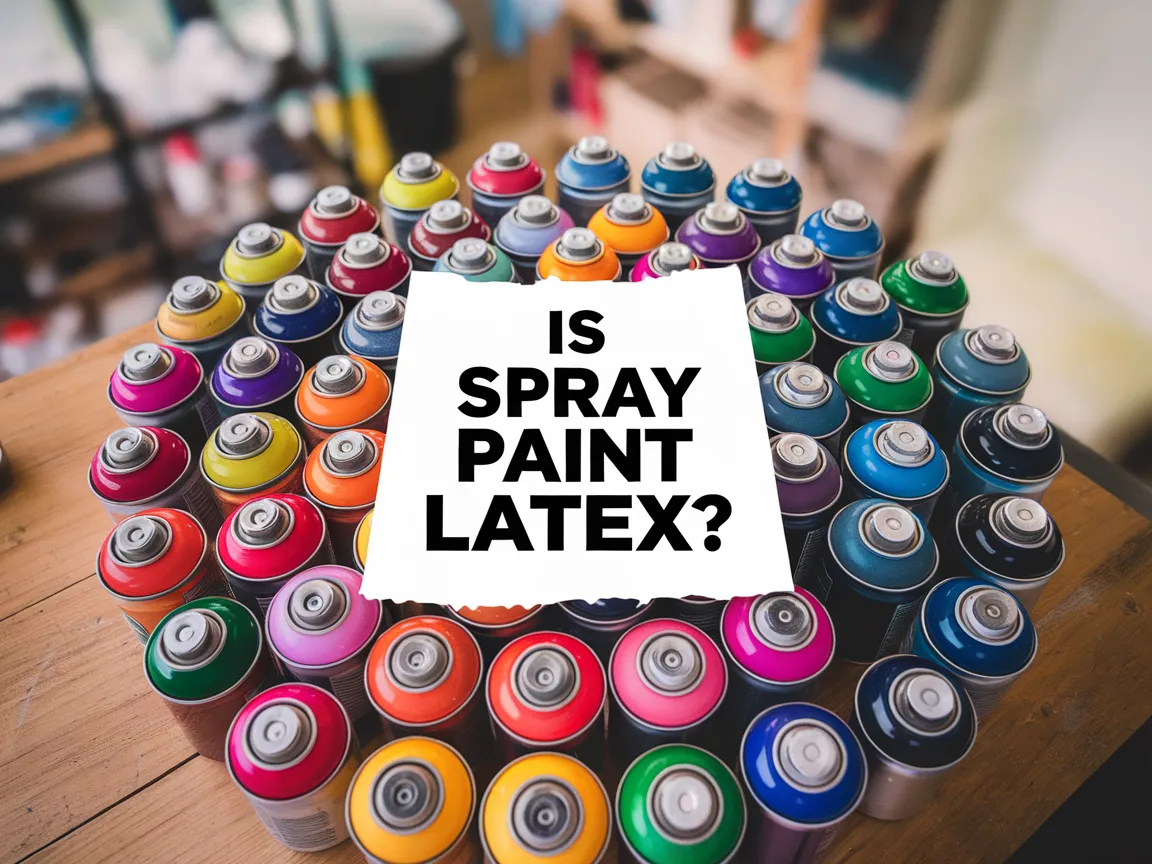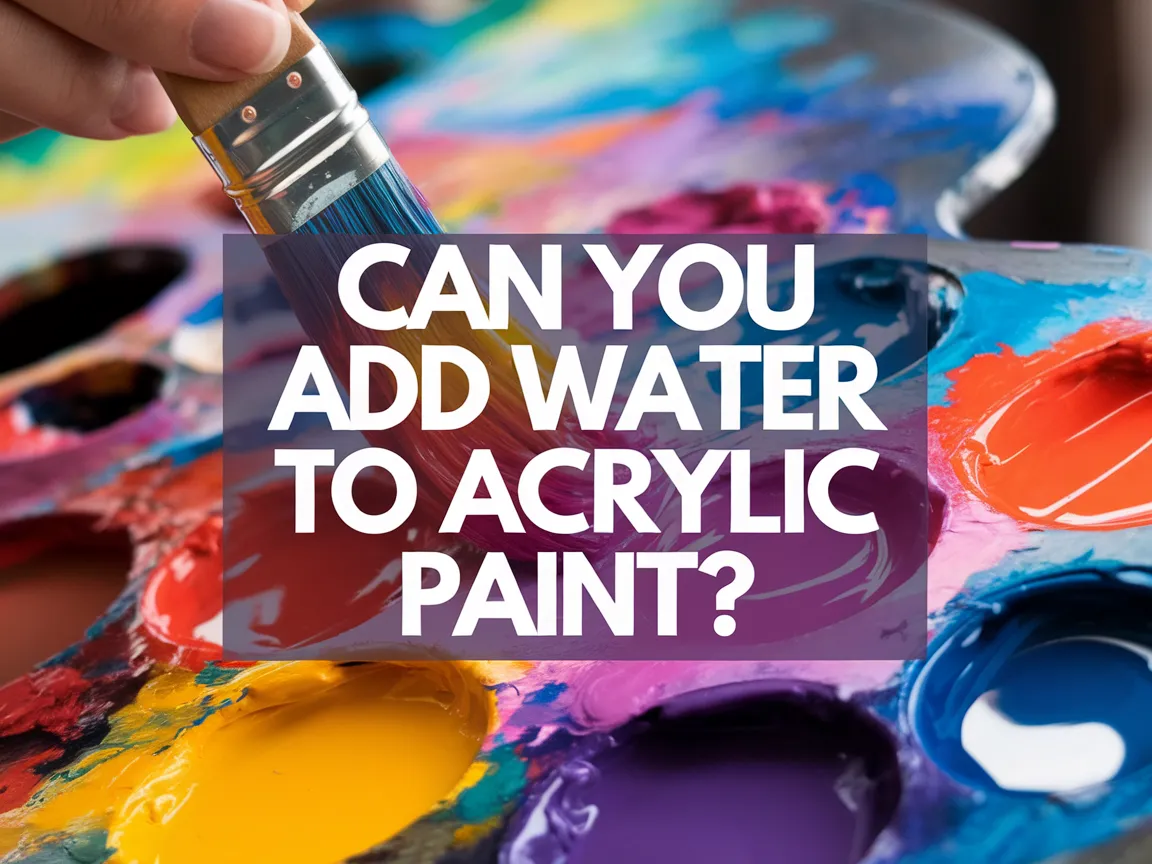Can You Use Oil Based Paint Over Latex?
Published on: November 25, 2025 | Last Updated: October 1, 2025
Written By: paint_answered
Latex is a type of paint made from water and tiny bits of plastic. It dries fast and is easy to clean up, just like washing your hands with soap!
So, can you use oil based paint over latex? It’s super important to know because mixing these can cause problems. I’ve had a few mishaps, and trust me, it’s better to follow the right steps!
In this article, we’ll explore what latex paint is, important considerations before you start, the steps to apply oil-based paint over latex, color recommendations, types of paint to use, factors affecting the application, common issues you might face, finishing touches, and DIY project ideas. We’ll wrap it up with some frequently asked questions about using oil based paint over latex.
Contents
- 1 Can You Use Oil-based Paint Over Latex?
- 2 What is Latex Paint?
- 3 Important Considerations Before You Start
- 4 Steps to Successfully Paint Over Latex With Oil-based Paint
- 5 Potential Benefits of Using Oil-based Paint Over Latex
- 6 Compatibility of Oil-based Paint with Different Latex Formulations
- 7 Testing Paint Compatibility Before Application
- 8 Factors Affecting the Application Of Oil-based Paint Over Latex
- 9 Common Issues Encountered When Using Oil-based Paint Over Latex
- 10 Finishing Touches to Perfect Your Project
- 11 DIY Project Ideas Using Oil-based Paint Over Latex
- 12 Frequently Asked Questions About Using Oil-based Paint Over Latex
- 13 Conclusion
- 14 Additional Resources
Can You Use Oil-based Paint Over Latex?
No, you can’t use oil-based paint over latex without priming first. Latex paint creates a barrier that oil won’t adhere to. You should use a bonding primer to make sure the oil-based paint sticks well. If you want to transform your furniture with a professional finish, check out these expert painting techniques for furniture. It’s all about that prep work!
The Finishing Touch
A freshly painted wall is a blank canvas. The best way to bring your room to life is with a single piece of statement art that ties everything together.
Browse Wall Art at Big Wall DecorWhat is Latex Paint?
Latex paint is a water-based paint made primarily from acrylic or vinyl resins. It’s typically composed of 30-50% water and 40-60% solids, including pigments, stabilizers, and surfactants.
You might wonder about mixing latex and oil-based paints. I once tackled a home project where using oil over latex tested my nerves. It was tricky!
For work, I used it to create a bold mural in my living room. The bright colors of latex paint made the mural pop! But when I wondered if I could use oil paint over latex for details, I found it could lead to separation and peeling. Always do a spot test before mixing those materials! If you’re curious about painting techniques on different surfaces, you might want to explore painting techniques and mediums.
Important Considerations Before You Start
What do you need to prepare for?
- Valid Paint Stripper: You need a quality product like Citristrip (1 Qt, ~0.95 L). It’s essential for removing oil paint from latex as it breaks the bond.
- High-Grit Sandpaper: Get 120-220 grit sandpaper, such as 3M Pro-Pak. It roughens latex, allowing oil-based paint to adhere better.
- Primer: Use a latex primer with a bonding agent, like Zinsser Cover Stain (1 Qt, ~0.95 L). A good primer protects the latex and helps oil paint stick.
- Paint Brushes: Choose synthetic bristle brushes like Purdy (2-pack). They work best with oil paints and create a smooth finish.
- Protective Gear: Don’t forget gloves and a mask, like 3M N95. They keep you safe from fumes and irritants.
We have now covered key considerations before beginning your project. The next section will detail the steps for painting over latex.
Also See: Why Does Ironlak Paint Drip So Much? Tips to Avoid It

Steps to Successfully Paint Over Latex With Oil-based Paint
Here are the steps to use oil-based paint over latex.
The Finishing Touch
A freshly painted wall is a blank canvas. The best way to bring your room to life is with a single piece of statement art that ties everything together.
Browse Wall Art at Big Wall Decor-
Prepare the Surface
Start by wiping down the latex surface to remove dirt, grease, and dust. Use a damp cloth and ensure it’s completely dry before moving on.
Pay attention to rough spots or flaking areas. Sand those lightly to create a smooth surface for better adhesion.
-
Prime the Latex Surface
Use an oil-based primer made for latex paint. Apply a thin, even layer to ensure proper adhesion and prevent peeling.
Let the primer dry completely. Most oil-based primers take about 24 hours to dry, depending on humidity and temperature.
-
Apply the Oil-based Paint
Once primed, take your oil-based paint and apply it evenly. Don’t rush—use thin coats instead of heavy ones.
For best results, use a high-quality brush or roller. Aim for uniform coverage and avoid overworking the paint to minimize brush strokes.
-
Allow Time for Drying
Patience is key! Let the oil-based paint dry for at least 24 hours before applying a second coat or any finishes.
Humidity and temperature affect drying time. In hot, dry conditions, it may cure faster; in humid conditions, you might need to wait longer.
We have now covered the steps to successfully paint over latex with oil-based paint. Next, we will explore the benefits of using oil-based paint.
Potential Benefits of Using Oil-based Paint Over Latex
Wondering why you might want to use oil-based paint over latex? Let’s explore some key benefits.
- Durability: Oil-based paints provide a tougher finish, making them perfect for high-traffic areas like hallways.
- Glossy Finish: Oil paints often create a beautiful shine, enhancing the overall aesthetic of your project.
- Color Retention: These paints maintain their color and sheen longer compared to latex, which can fade over time.
- Mildew Resistance: Oil-based paints are less prone to mildew, making them suitable for kitchens and bathrooms.
So far we covered the advantages of oil-based paint compared to latex. Let’s look at how oil-based paint works with various latex formulations next.
Compatibility of Oil-based Paint with Different Latex Formulations
Not all latex paints are the same. Let’s dive into how different formulations impact the application of oil-based paint.
| Latex Formulation | Adhesion Qualities | Recommended Techniques |
|---|---|---|
| Flat Latex | Good adhesion; absorbs oil well. | Use 2-3 coats of oil for a smooth finish. |
| Satin Latex | Moderate adhesion; smooth sheen can complicate bonding. | Light sanding recommended before priming. |
| Glossy Latex | Poor adhesion; creates a smooth barrier. | Extensive sanding required; apply a strong bonding primer. |
| Exterior Latex | Weather-resistant; oil often forms a better bond. | Consider using an oil primer for exterior durability. |
We’ve wrapped up the compatibility of oil-based paint with various latex formulations here. Let us turn our attention to testing paint compatibility before application.

Testing Paint Compatibility Before Application
Worried about how your oil-based paint will interact with latex? Here’s a simple test.
- Patch Test: Apply a small amount of oil paint over the latex in an inconspicuous area. Wait 24 hours to check for separation or peeling.
- Adhesion Tape Test: Place tape over dried oil paint; remove gently. If it lifts latex underneath, rethink your approach.
These steps guarantee a smooth application. Trust me; it’s worth the extra effort to avoid future headaches!
Factors Affecting the Application Of Oil-based Paint Over Latex
What factors impact using oil paint over water-based latex?
-
Surface Preparation: A clean, rough surface helps oil paint adhere better to latex.
-
Drying Time: Make sure the latex is completely dry; otherwise, the oil won’t bond properly.
-
Primer Compatibility: An oil-based primer creates a better barrier between the two types.
-
Temperature and Humidity: High humidity can disrupt the curing process of oil paint over latex.
Common Issues Encountered When Using Oil-based Paint Over Latex
Once, my friend Sally tried using oil-based paint over latex, and her project bubbled. This happened because the oil didn’t adhere well to the latex underneath.
To fix it, lightly sand the latex layer (Around 220-grit), clean it, and apply a specialized primer. This helps oil paint adhere (Stick)! Always check your paint for the best results.
Finishing Touches to Perfect Your Project
After checking if oil-based paint works on latex, focus on proper curing. Wait at least 72 hours (3 Days) before handling. This ensures the finish hardens correctly.
The Finishing Touch
A freshly painted wall is a blank canvas. The best way to bring your room to life is with a single piece of statement art that ties everything together.
Browse Wall Art at Big Wall DecorInspect for any bubbles or peeling in the latex after a few days. Ensure edges are crisp for a neat appearance—aim for less than 1/8 inch (3.2 Mm) of overlap.
I recommend using Zinsser Bulls Eye 1-2-3 for a smooth finish. It’s a reliable primer when applying oil-based paint over latex.
For experts, avoid water-based prep products. Instead, prime latex surfaces with a 100% acrylic formula. This prevents issues like wrinkling when applying oil-based finishes.
DIY Project Ideas Using Oil-based Paint Over Latex
Have you ever thought about revamping old furniture or creating custom art pieces with oil-based paint over latex? One unique idea is turning a plain wooden chair into a chic statement piece using marbling techniques!
To get started on these projects, I’d grab a can of oil-based paint, some latex paint, and a few brushes. Materials might set you back about $50–$100 USD, and with a weekend, you’ll have a fresh new look—how exciting is that? If you’re interested in exploring digital art techniques, you might want to check out how to animate in MediBang Paint.
If you’re wondering, “Can you use oil-based paint over latex?”—yes, but here’s a twist: consider applying a clear acrylic sealer to prep your surface beforehand. Or, if you’re not feeling oil-based, try using a high-quality primer specifically designed for this combo; it’s worked wonders for me in the past! Professional painters often explore unique paint techniques that require specialized knowledge about aircraft paint application methods.
Frequently Asked Questions About Using Oil-based Paint Over Latex
1. Can You Paint Oil-based Paint Over Latex Without a Primer?
Yes, you can paint oil-based paint over latex without a primer, but it’s risky. Skipping primer might lead to poor adhesion and peeling, especially after some time. A primer can create a stronger bond, ensuring durability for your paint job.
2. How Long Should You Wait Before Applying Oil-based Paint Over Latex?
You should wait at least 24 hours before applying oil-based paint over latex. This time allows the latex paint to cure properly, which helps improve adhesion and prevents issues like bubbling or peeling. If you’re curious about painting techniques for different surfaces, painting before complete drying requires careful consideration.
3. Will Oil-based Paint Work on Latex Wall Paint?
Yes, oil-based paint will work on latex wall paint, but it’s best with the right prep. Properly cleaning the latex surface and considering a primer can enhance the bonding, leading to a better finish. If you’re unsure about painting techniques for your specific apartment walls, check out apartment painting best practices.
4. What Happens if I Skip Priming?
If you skip priming when using oil-based paint over latex, you risk adhesion failure. This mistake can lead to the paint chipping or peeling, especially in high-moisture areas where problems are more noticeable. When preparing to paint apartment walls correctly, proper surface preparation is crucial for a lasting finish.
5. How Can I Remove Oil-based Paint From Latex Surfaces?
To remove oil-based paint from latex surfaces, use a solvent like mineral spirits. Applying it with a rag can dissolve the paint, but be careful. Use in a well-ventilated area and test on a small section first. If you’re looking for alternative paint application methods, spray guns offer precise touch-up techniques.
6. Can You Put Oil Paint Over Latex Primer?
Yes, you can put oil paint over latex primer. Latex primers are designed to enhance bonding, making the transition to oil paint smoother and producing a more lasting finish.
7. How Do You Clean Latex Paint Off Brushes?
You can clean latex paint off brushes using warm, soapy water. Make sure to rinse thoroughly, then reshape the brush bristles to keep them from fraying.
8. How Do You Dispose Of Latex Paint?
To dispose of latex paint, let it dry out completely before throwing it in the trash. Many communities also offer paint recycling programs if you’d like an eco-friendly option.
Conclusion
You made it to the end. We covered the essentials, like what latex paint is, important considerations before you start, steps to successfully paint over latex with oil-based paint, factors affecting your application, common issues, and some DIY project ideas.
So, can you use oil-based paint over latex? The answer is yes, but prep work matters. Ensure you clean and prime correctly to avoid bad adhesion. Contact me if you’d like more guidance on using oil-based paint over latex paint.
For additional information and insights, feel free to navigate to Paint Answers.
Additional Resources
- painting – Can I paint over latex with oil-based enamel to repair a peeling situation? – Home Improvement Stack Exchange
- Can you use oil-based paint over latex paint without sanding first? – Quora
- Painting oil over latex? | The Garage Journal









